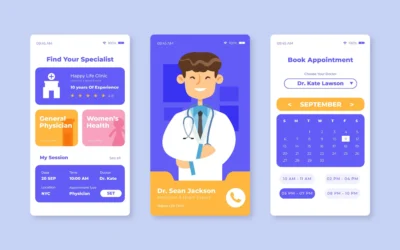In the highly competitive healthcare industry, a fast-loading website isn’t just a luxury — it’s a necessity. Medical companies rely on their websites to provide critical information, book appointments, communicate with patients, and build trust. However, many overlook the importance of website speed. A slow site can harm user experience, lower patient trust, and negatively affect search engine rankings. In this article, we’ll explore why optimizing website speed is crucial for medical companies and offer practical strategies to achieve it.
Why Website Speed Matters for Medical Companies
Today’s patients expect instant results and seamless digital experiences. According to research, 53% of users abandon a website that takes longer than three seconds to load. For medical companies, this can translate into missed appointment bookings, reduced credibility, and lost revenue.
Key Impacts of Website Speed on Medical Companies:
- User Experience (UX): Slow-loading pages frustrate users, increasing bounce rates and reducing the time spent on your site.
- SEO Rankings: Search engines, like Google, prioritize fast websites for higher rankings. Slow speed can push your site down in search results.
- Trust and Professionalism: A slow website can create a poor first impression for patients, damaging trust and professionalism—qualities vital for healthcare providers.
- Mobile Accessibility: In an era where mobile devices dominate healthcare searches, ensuring quick load times on smaller screens is essential.
Proven Strategies to Optimize Website Speed for Medical Companies
In the competitive healthcare industry, where patients rely on online platforms to find reliable information and services, website speed plays a critical role in creating a positive user experience. A slow-loading website can frustrate potential patients, increase bounce rates, and harm your search engine rankings, ultimately affecting your ability to connect with your audience.
Optimizing website speed is not just a technical improvement—it’s a strategic advantage that can elevate your medical company’s online presence, improve patient trust, and drive more engagement. By implementing proven strategies, you can ensure your website is fast, efficient, and aligned with modern user expectations.
Below, we outline actionable steps that will help your medical website achieve optimal performance and deliver a seamless browsing experience to users:
1. Implement a Content Delivery Network (CDN):
A CDN distributes your website’s content across multiple servers globally. When users access the site, they’re connected to the nearest server, reducing loading time significantly.
2. Compress Images:
Medical websites often feature high-quality images, such as treatment visuals or clinic photos. Use tools like TinyPNG to compress images without losing quality.
3. Enable Browser Caching:
Caching allows returning visitors to load your website faster by storing certain files locally on their devices. This reduces data transfer and speeds up load time.
4. Minimize HTTP Requests:
Each element on a website, such as images, scripts, and stylesheets, requires an HTTP request. Minimizing these requests can drastically improve loading speed.
5. Optimize for Mobile:
Ensure your website uses responsive design, lightweight code, and compressed media to perform well on mobile devices.
6. Leverage Lazy Loading:
Lazy loading ensures that images and videos load only when they appear in the user’s viewport, improving overall speed.
Why Speed is Crucial for SEO in Healthcare
Search engines prioritize user experience, and website speed plays a pivotal role in determining that experience. For healthcare providers, where patients often seek urgent information or immediate services, a fast-loading website is essential. Not only does it improve your SEO ranking, making your site more visible in a competitive medical landscape, but it also ensures a seamless browsing experience for users.
A faster website fosters higher engagement by reducing bounce rates, as visitors are more likely to stay and explore a site that loads quickly. This, in turn, leads to increased conversions, whether it’s booking appointments, accessing medical resources, or signing up for health programs. Moreover, speed builds patient trust by reflecting a commitment to professionalism and efficiency—qualities that are paramount in healthcare.
By prioritizing speed optimization, healthcare providers can elevate their online presence, improve patient satisfaction, and secure a competitive edge in an increasingly digital-first world.
Take Action Today!
In the healthcare industry, every second counts—both in patient care and online interactions. A fast, responsive website can set your medical company apart, driving patient satisfaction and long-term success. Begin optimizing your site today to reap the benefits of improved user experience, higher SEO rankings, and, ultimately, better patient care.















